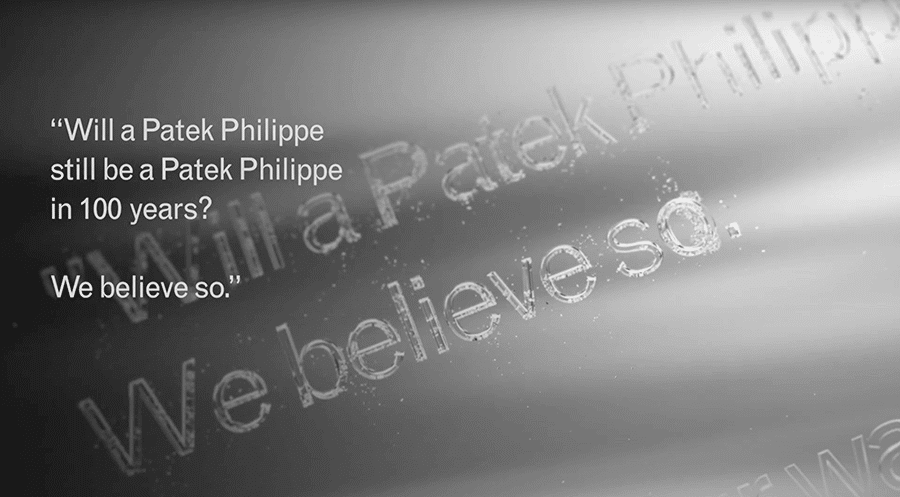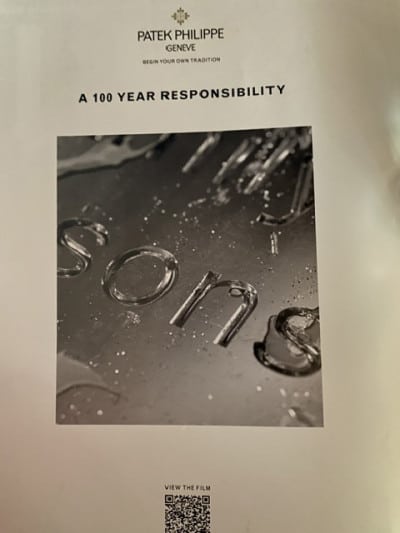
What would you sacrifice your life for?
Your job? Your home? Your boat or car? Your family pet? Your spouse and children?
In the John Wick movie series, the end of the second movie plays into the third movie where John Wick (played by Keanu Reeves) commits an unforgivable offense against the syndicate. He is told that his life is forfeit. He knew the rules and he, knowingly, violated those rules. A price must be paid.
We’ve seen a similar theme in old gangster movies, and certainly in movies with a heavy Mob influence. If you do ‘this thing’ your punishment is your life in exchange for something that is sacred to you, perhaps the lives of your loved ones.
Have you thought about my first question? It can be an emotional decision.
Great advertisements and great marketing draw strong emotions into the strategy.
Can it work for just any product or service? Possibly, if handled by a master craftsman.
 When I opened the latest issue of the only magazine I subscribe to, on the inside front cover was an intriguing photograph with a simple headline. The headline, above the photo, says, “A 100-Year Responsibility.” The photo is now even more intriguing. It’s a small square with one word, “Sons” framed in the photo. At the bottom of the page is a QR code for you to scan that leads you to a short video that explains both the headline and the curious photograph.
When I opened the latest issue of the only magazine I subscribe to, on the inside front cover was an intriguing photograph with a simple headline. The headline, above the photo, says, “A 100-Year Responsibility.” The photo is now even more intriguing. It’s a small square with one word, “Sons” framed in the photo. At the bottom of the page is a QR code for you to scan that leads you to a short video that explains both the headline and the curious photograph.
The headline makes me think two thoughts: what is this 100-year responsibility? And, wow, that’s a heavy burden. Who would do that?
The company also invested in the page opposite the inside front cover, so this is a substantial media buy. On the second page is a 3-paragraph letter from the company president that explains the inside front cover. Short paragraphs. The headline above the letter on the second page simply states, “A Story About Commitment.”
The advertisement is for a watch brand I don’t know very well, Patek Philippe. It’s a family-owned company. The owner begins his letter with a question to himself (and prospective customers). “Will a Patek Phillippe still be a Patek Phillippe in 100 years?”
He concludes the letter by simply saying that the excellence of his watches MUST remain because he doesn’t want to create any problems for his successors – HIS SONS.
I want to purchase a Patek Philippe watch. I’m fairly certain that I can’t afford it, but I want one anyway.
This advertisement doesn’t talk about selling you anything.
There are no photographs of any of the watches that the company sells. There are no prices, no phone number, and no website address. No guarantees or warranties.
Just this simple, powerful story, about how the owner, the father, wants to maintain the elite standard of his product so that when his sons take over the company, they will be able to thrive because the father was a great steward of the company.
As the father of three amazing daughters, I’m not ashamed to say that my wife and I have made many sacrifices for our babies over the last 33 years. And, yes, if it came to that ultimate sacrifice, I would gladly make that exchange. That’s why this ad hit home for me, and that’s why I want to purchase a Patek Philippe timepiece.
The other thing that this ad does so well is what we Wizards call, Being Perfectly (Robert) Frank. Robert Frank was one of the best photographers of all time, and the principles of writing in the manner in which Robert Frank took photos are: Choose a revealing angle and put the reader/listener/viewer on the scene. Select your details sparingly. Include what’s interesting, and barely that. Put the unknown “underwater.” Never tell the reader/listener/viewer anything he already knows or can figure out for himself.
What does this advertisement tell you… without telling you?
Subliminally, I BELIEVE that if I purchase a Patek Philippe timepiece, it will be of the highest quality timepiece in the world. Rolex… shmolex.
Let’s contrast that with a different ad in the same magazine in the identical product category. On the outside back cover, Omega purchased a full-page ad, and it begins with a two-thirds-page photograph of brand ambassador Rory McIlroy finishing his golf swing, with an Omega watch on his right wrist.
The short copy block explains some of the characteristics that make Rory a great golfer and then attempts to convince you that the characteristics that make Rory great are the same reasons that the Omega watch that Rory wears is also great.
Here’s the problem. Number one, we know Rory is a brand ambassador, so we know that he’s getting paid to wear the watch and to promote the watch. That fact won’t sway most people and might discourage some others. Second, the short copy block only discusses the features of the watch. It makes neither the case for why it’s a great timepiece, nor why I should purchase it – if I could afford it (I don’t make Rory McIlroy money).
Omega, smartly, also does not mention selling you anything. Their problem is that they make absolutely no personal connection with me to influence my purchasing decision. Brand ambassadors have a smaller influence than companies will admit. According to digitalhumans.com, 63% of marketing campaigns that use brand ambassadors are not successful. And if there’s no emotional connection made with your customer, beyond that ambassador, you’re wasting a lot of money on your ad spend.
If you want to create an emotional connection with your customers and be Perfectly Frank, you can find me here.
- He Didn’t Have to Do It - December 22, 2025
- We Got a Freebie - December 2, 2025
- Do You Keep Your Promises? - November 20, 2025
